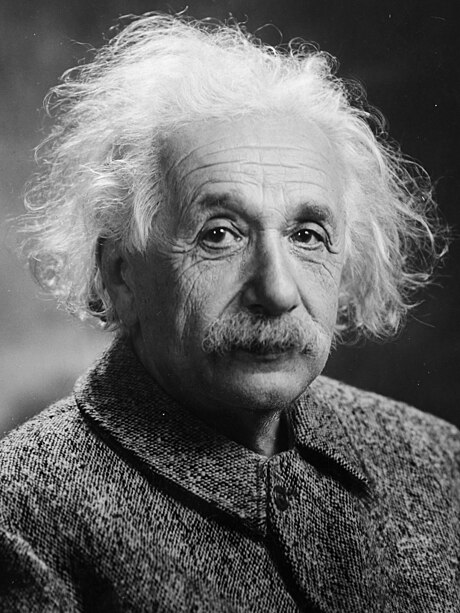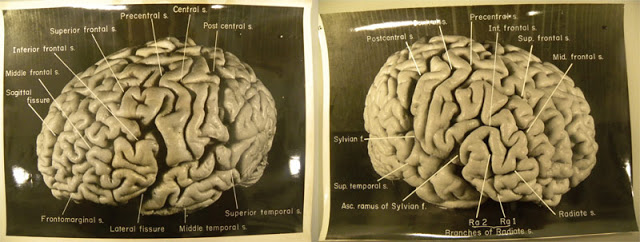

| Visitors Now: | |
| Total Visits: | |
| Total Stories: |

| Story Views | |
| Now: | |
| Last Hour: | |
| Last 24 Hours: | |
| Total: | |
New Study Details Previously Unexamined Images Of Albert Einstein’s Brain

Credit: Wikipedia
“Although Einstein’s brain was of average weight (1230 grams), his cortical anatomy was extraordinary when compared with normal human brains. His exceptional brain anatomy does not begin to explain his towering intellect but our study of brain photographs “lost” from public view for over half a century provides an exciting glimpse into the neural substrate of a genius,” said Frederick Lepore, MD, professor of neurology and ophthalmology at the University of Medicine and Dentistry of New Jersey-Robert Wood Johnson Medical School.
Dr. Lepore was co-author of the study along with Dean Falk, PhD, the Hale G. Smith Professor and chair of anthropology at Florida State University and senior scholar at the School for Advanced Research, Santa Fe, N.M., and Adrianne Noe, PhD, director of the National Museum of Health and Medicine, Silver Spring, Md., which holds the 14 images used in the study.
Credit: Brain (2012)/National Museum of Health and Medicine
According to the researchers, Einstein’s brain was photographed following his death in 1955, and sectioned into 240 celloidin-embedded blocks from which microscope slides were prepared. The great majority of the photographs, blocks, and slides have been unexamined and lost from public sight for more than 55 years.
The study, “The cerebral cortex of Albert Einstein: A description and preliminary analysis of unpublished photographs,” interprets the unusual features of Einstein’s brain, to the extent possible, in light of current functional imaging studies. The paper also publishes the “roadmap,” prepared in 1955 to illustrate the locations within Einstein’s previously whole brain of 240 dissected blocks of tissue, which provides a key to locating the origins within the brain of the newly emerged histological slides. Interesting cortical features of Einstein’s brain are correlated with blocks of the roadmap and therefore with the corresponding histological slides.
Although the overall size and overall asymmetrical shape of Einstein’s brain were normal, the prefrontal, somatosensory, primary motor, parietal, temporal and occipital cortices were extraordinary and, as detailed in the paper, may have provided the neurological underpinnings for some of his extraordinary cognitive abilities.
The National Museum of Health and Medicine, (NMHM), a component of the United States Army Medical Research and Materiel Command, acquired the slides and related archival material (including photographs of the brain before and during block sectioning, labeled diagrams of block sectioning, correspondence, scholarly reprints, popular articles, newspaper clippings, and other documents) from the Estate of Thomas Harvey, MD, in 2010. Harvey was the pathologist originally given permission by Einstein’s estate to preserve the brain for scientific study. In concurrence with the mission of the NMHM, the Harvey collection is available upon request for research according to NMHM policy.
Contacts and sources:
As one of the nation’s leading comprehensive medical schools, UMDNJ-Robert Wood Johnson Medical School is dedicated to the pursuit of excellence in education, research, health care delivery, and the promotion of community health. In cooperation with Robert Wood Johnson University Hospital, the medical school’s principal affiliate, they comprise one of the nation’s premier academic medical centers. In addition, Robert Wood Johnson Medical School has 34 other hospital affiliates and ambulatory care sites throughout the region.
As one of the eight schools of the University of Medicine and Dentistry of New Jersey with 2,800 full-time and volunteer faculty, Robert Wood Johnson Medical School encompasses 22 basic science and clinical departments, hosts centers and institutes including The Cancer Institute of New Jersey, the Child Health Institute of New Jersey, the Center for Advanced Biotechnology and Medicine, the Environmental and Occupational Health Sciences Institute, and the Stem Cell Institute of New Jersey. The medical school maintains educational programs at the undergraduate, graduate and postgraduate levels for more than 1,500 students on its campuses in New Brunswick, Piscataway, and Camden, and provides continuing education courses for health care professionals and community education programs. To learn more about UMDNJ-Robert Wood Johnson Medical School, log on to rwjms.umdnj.edu.



